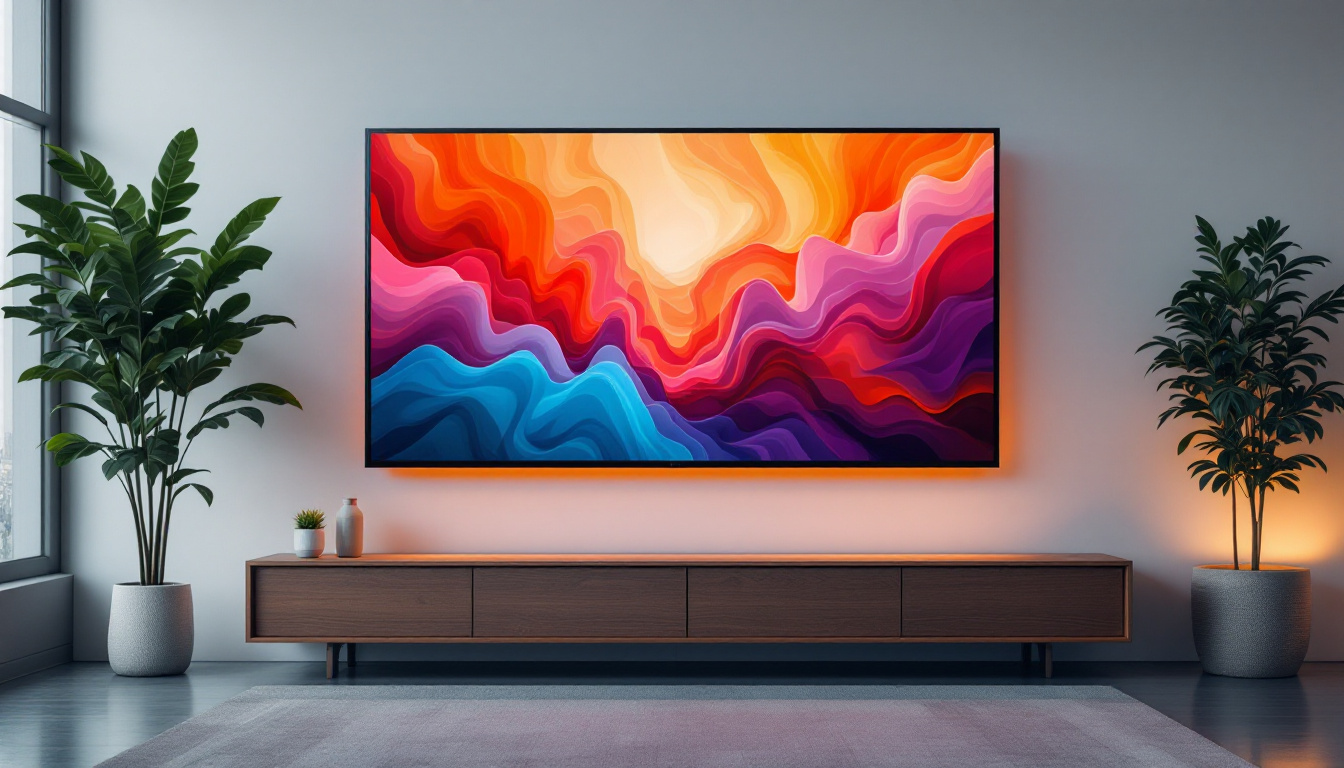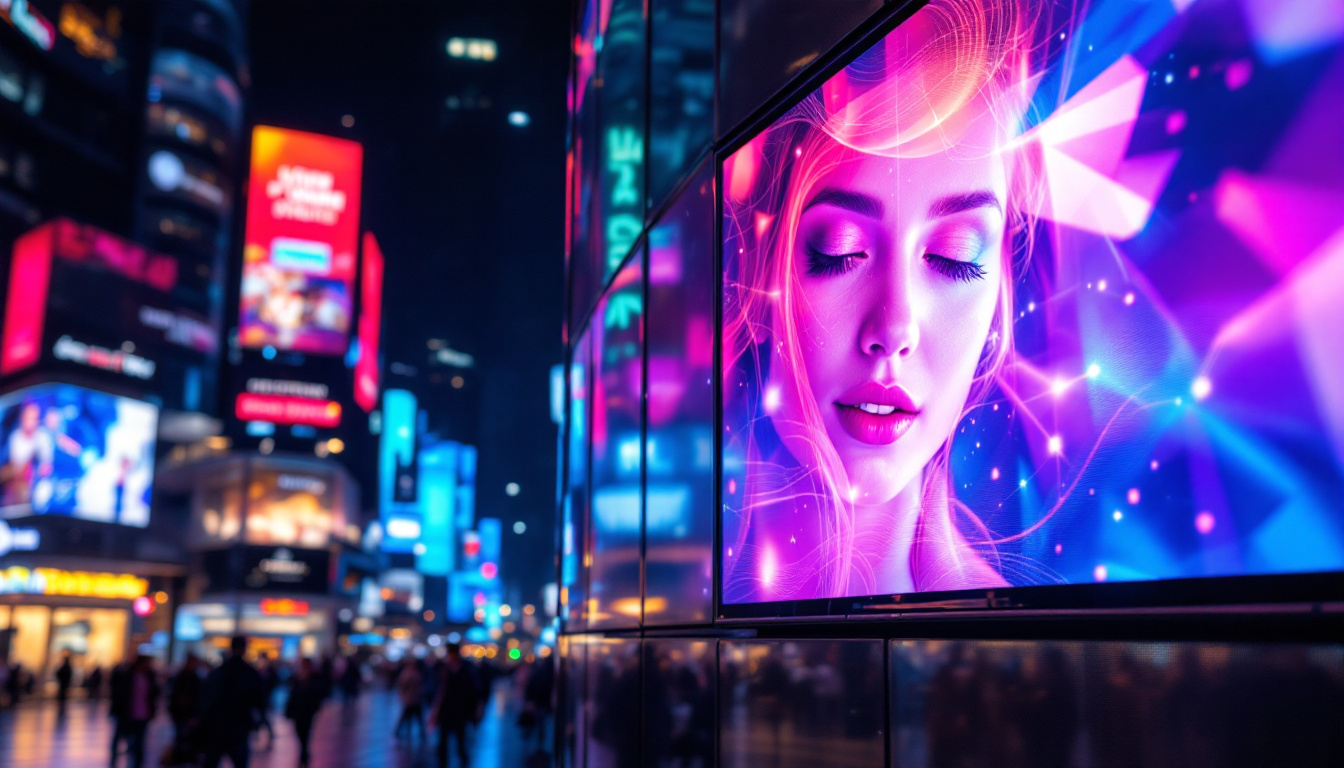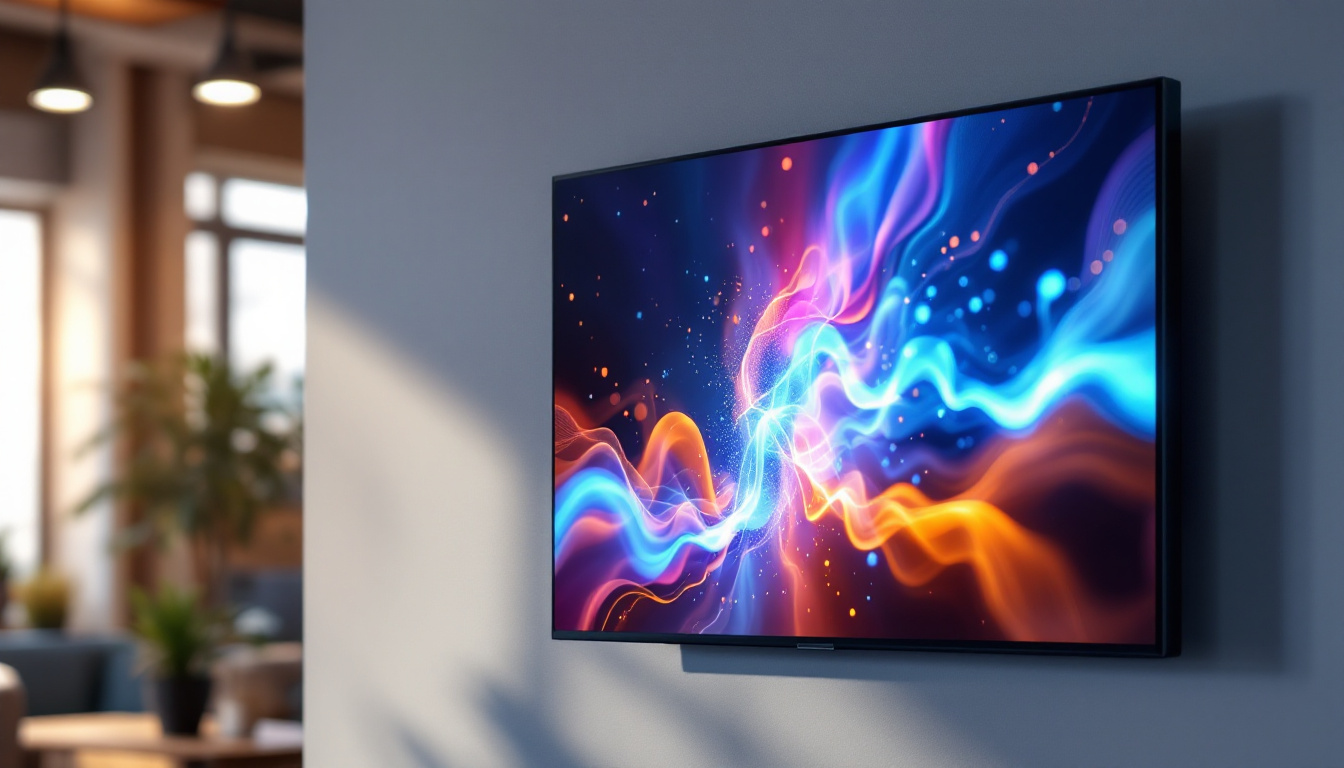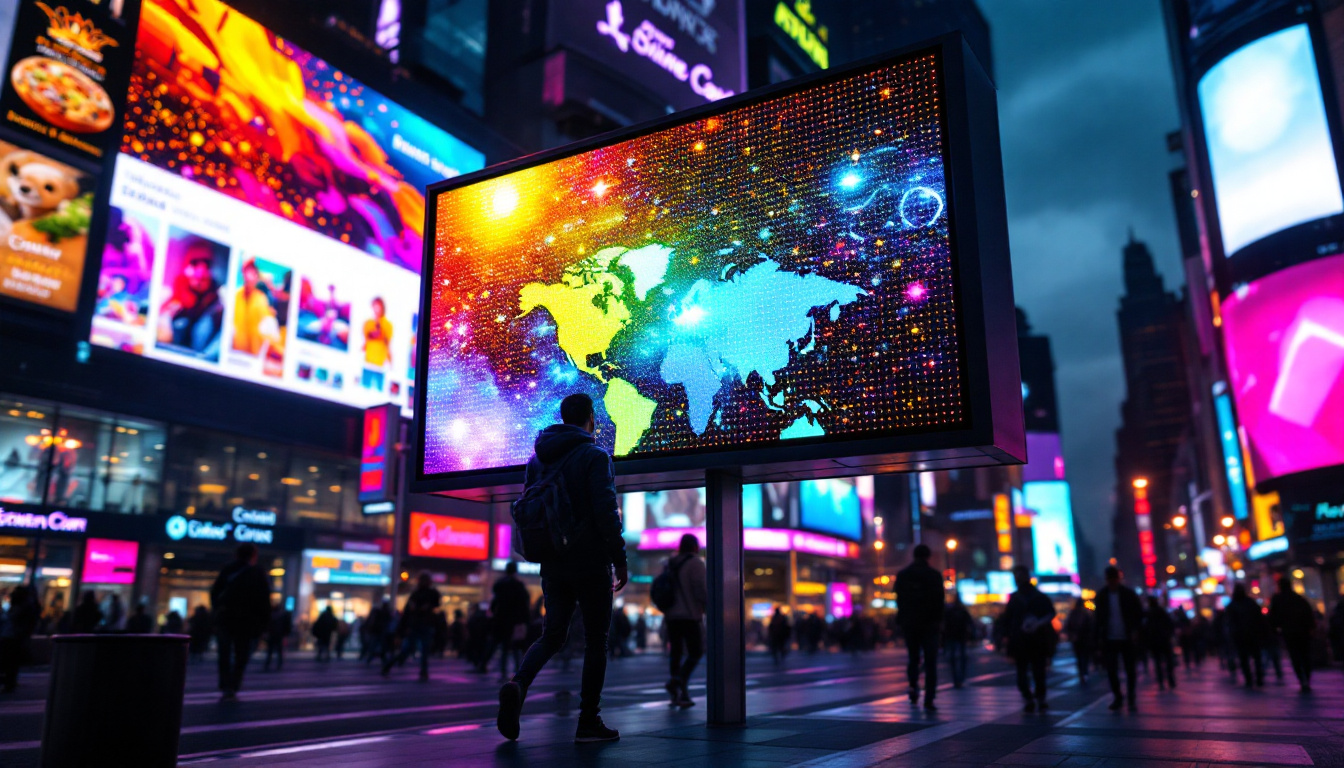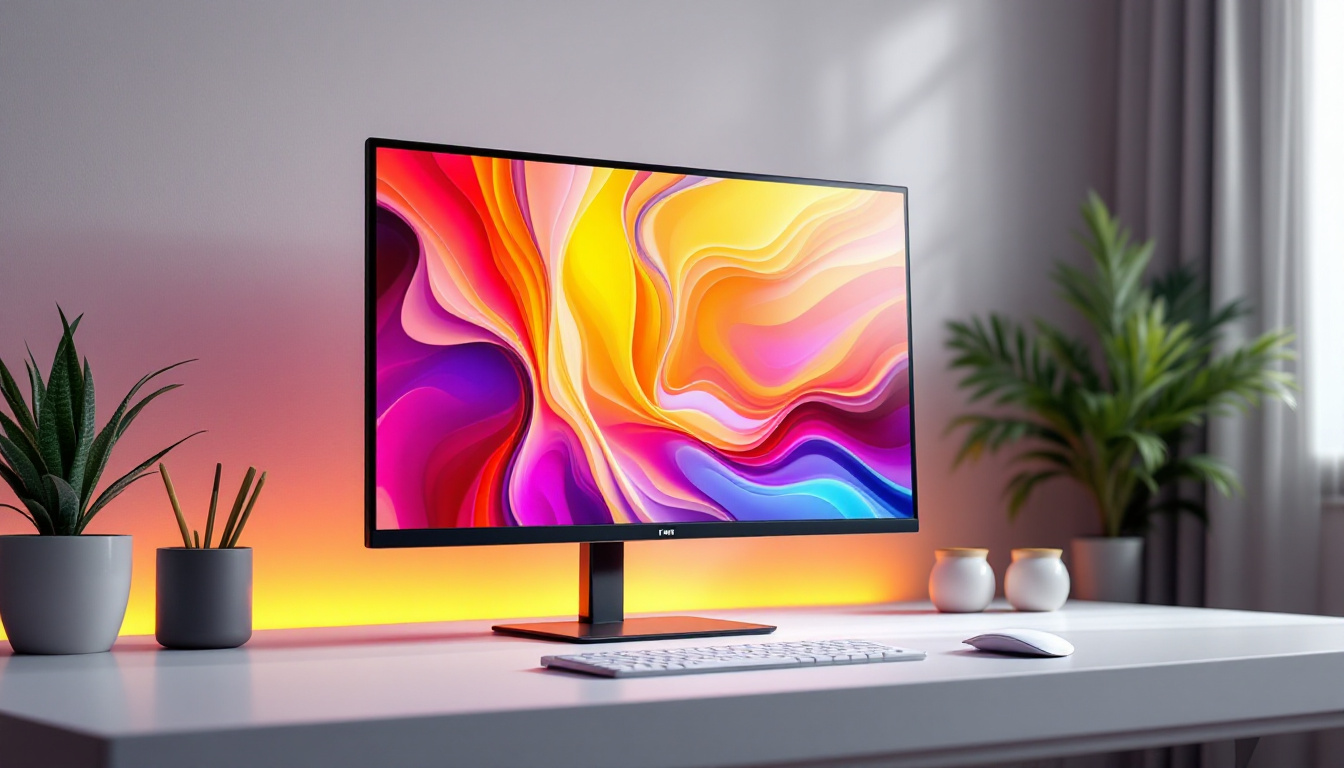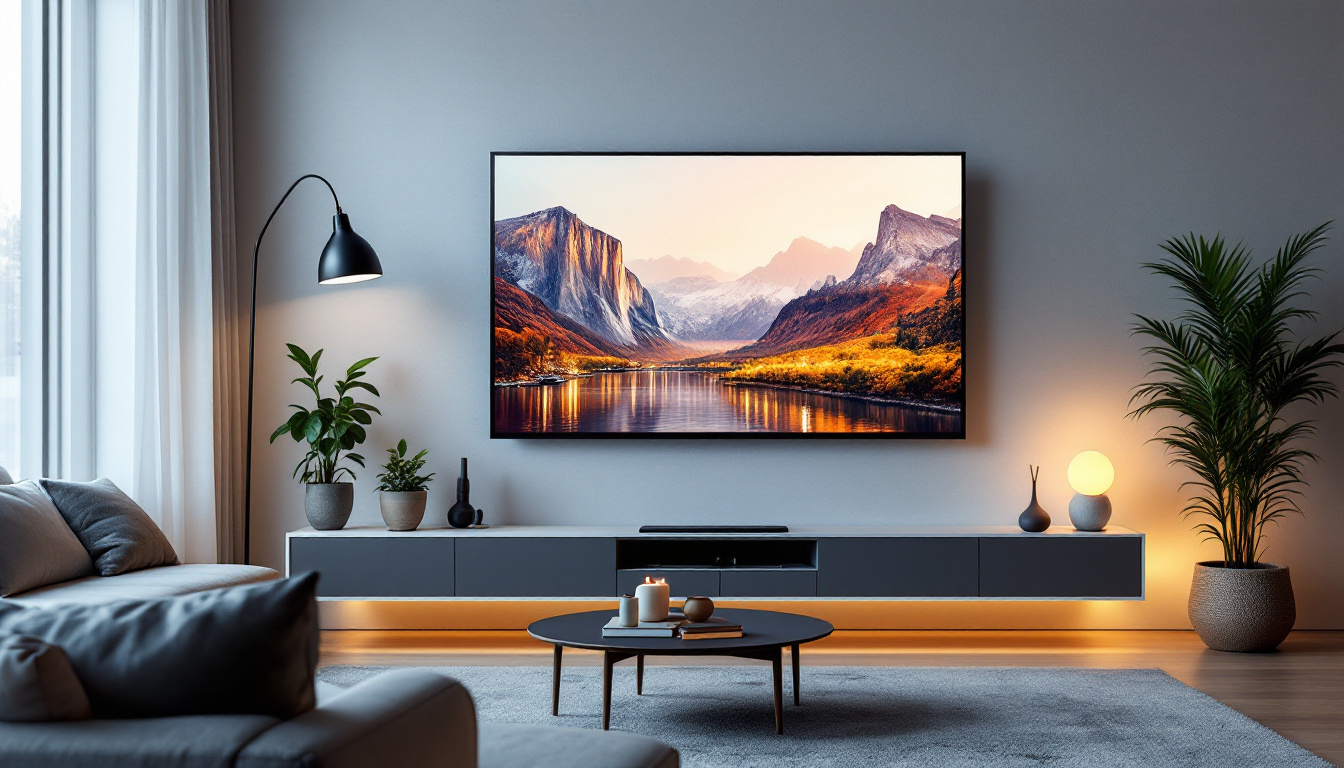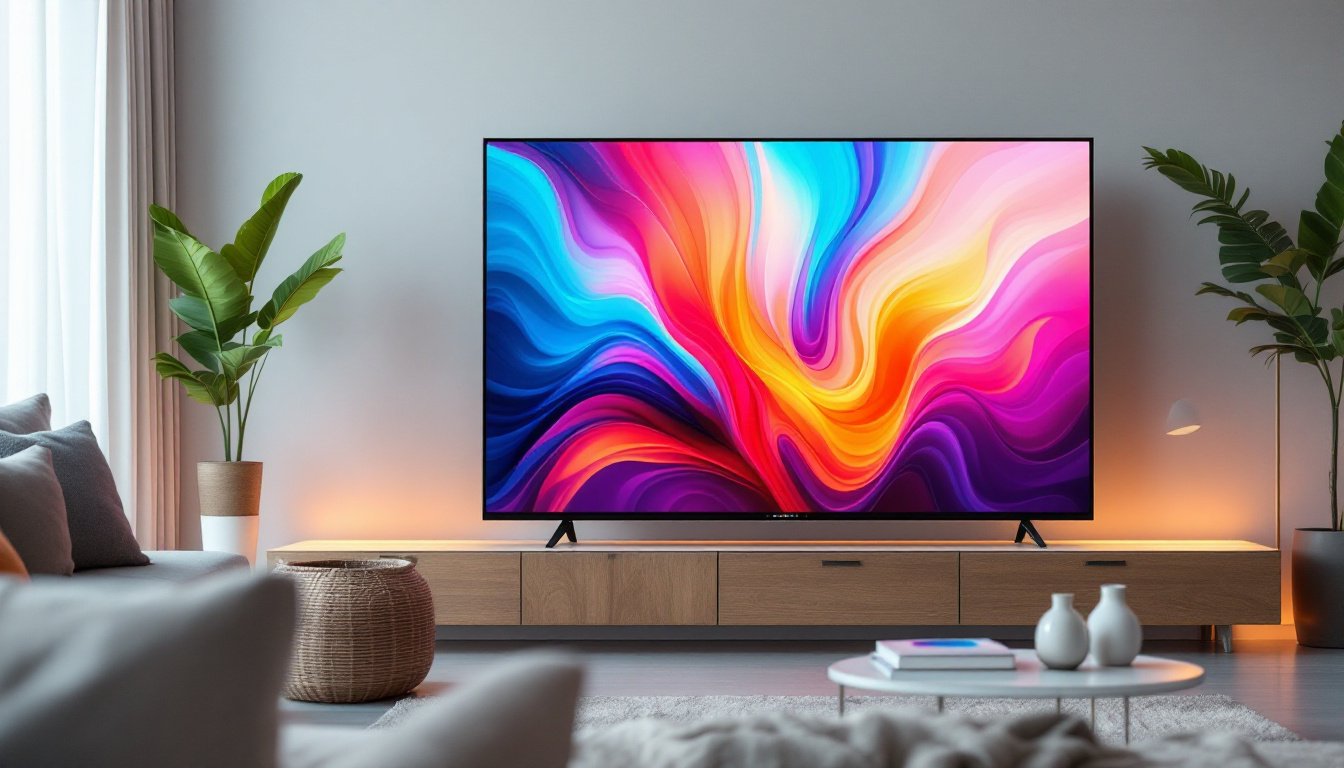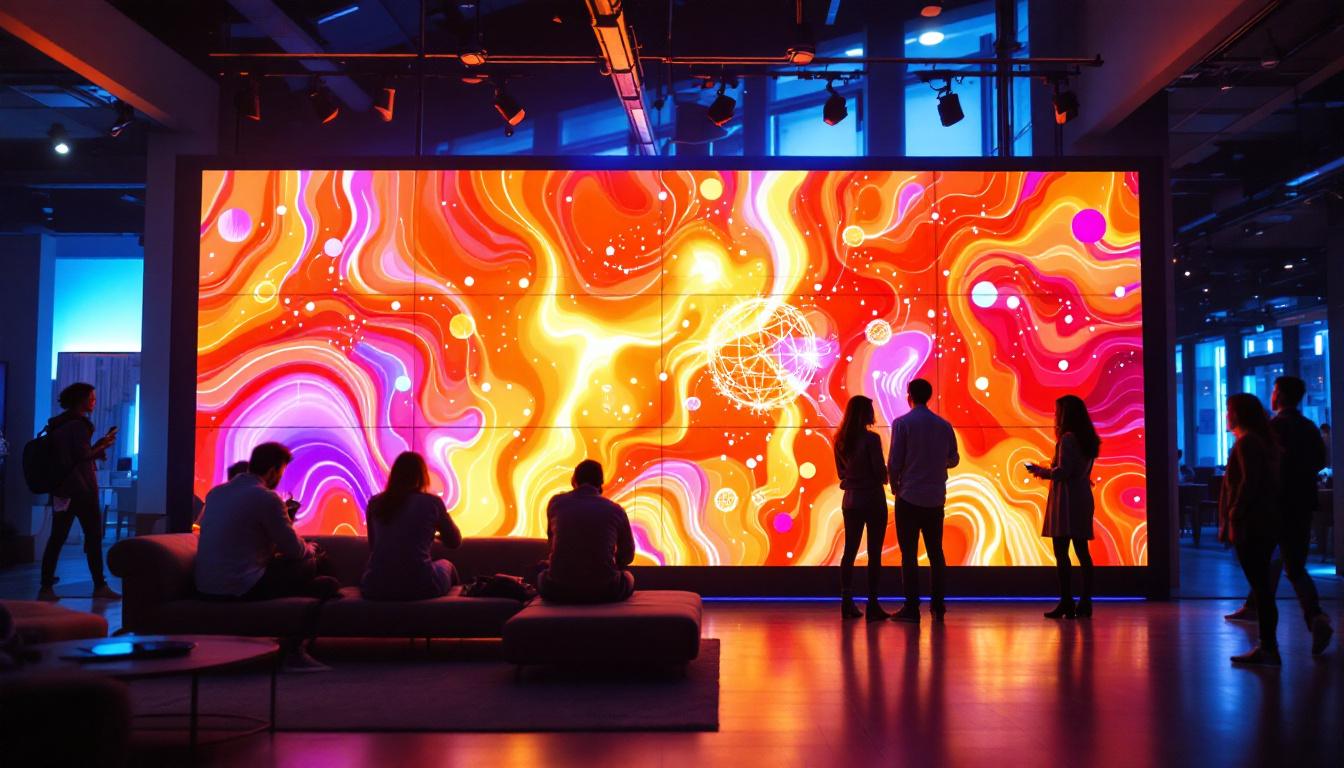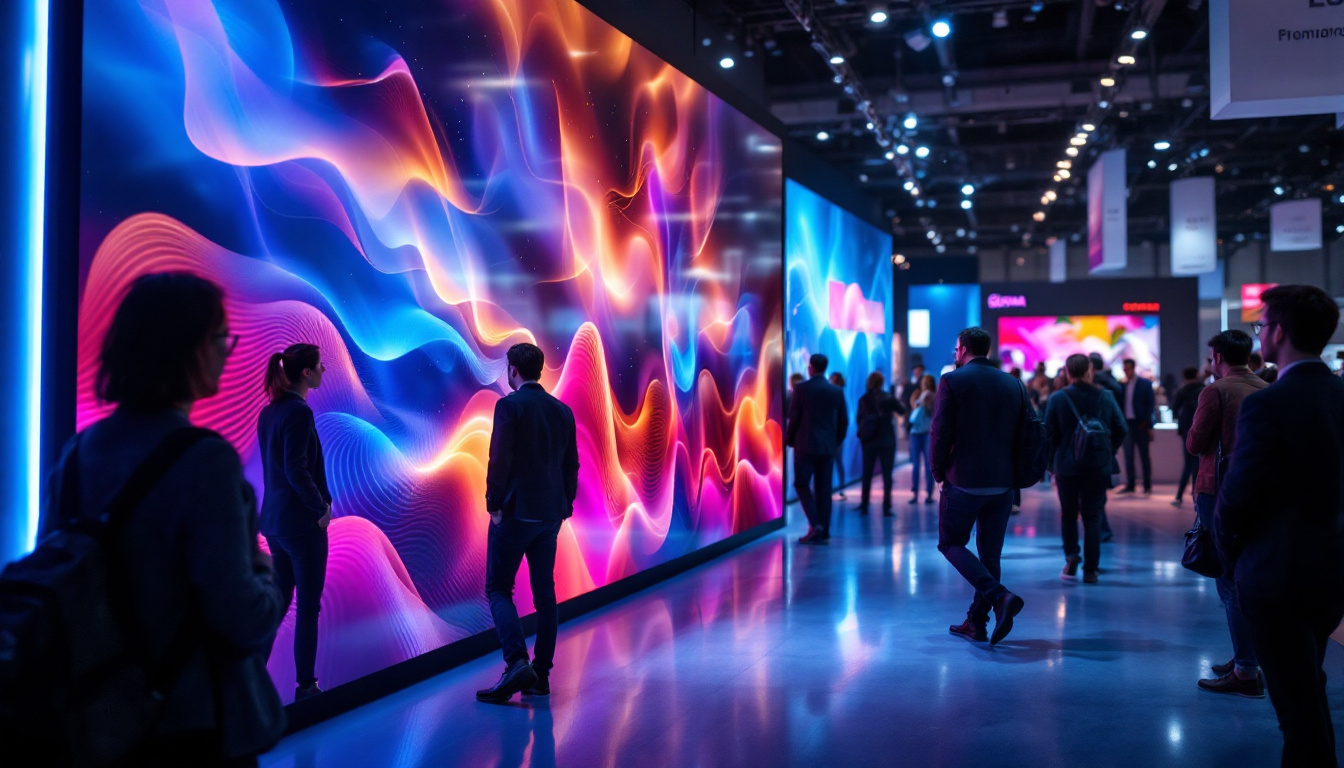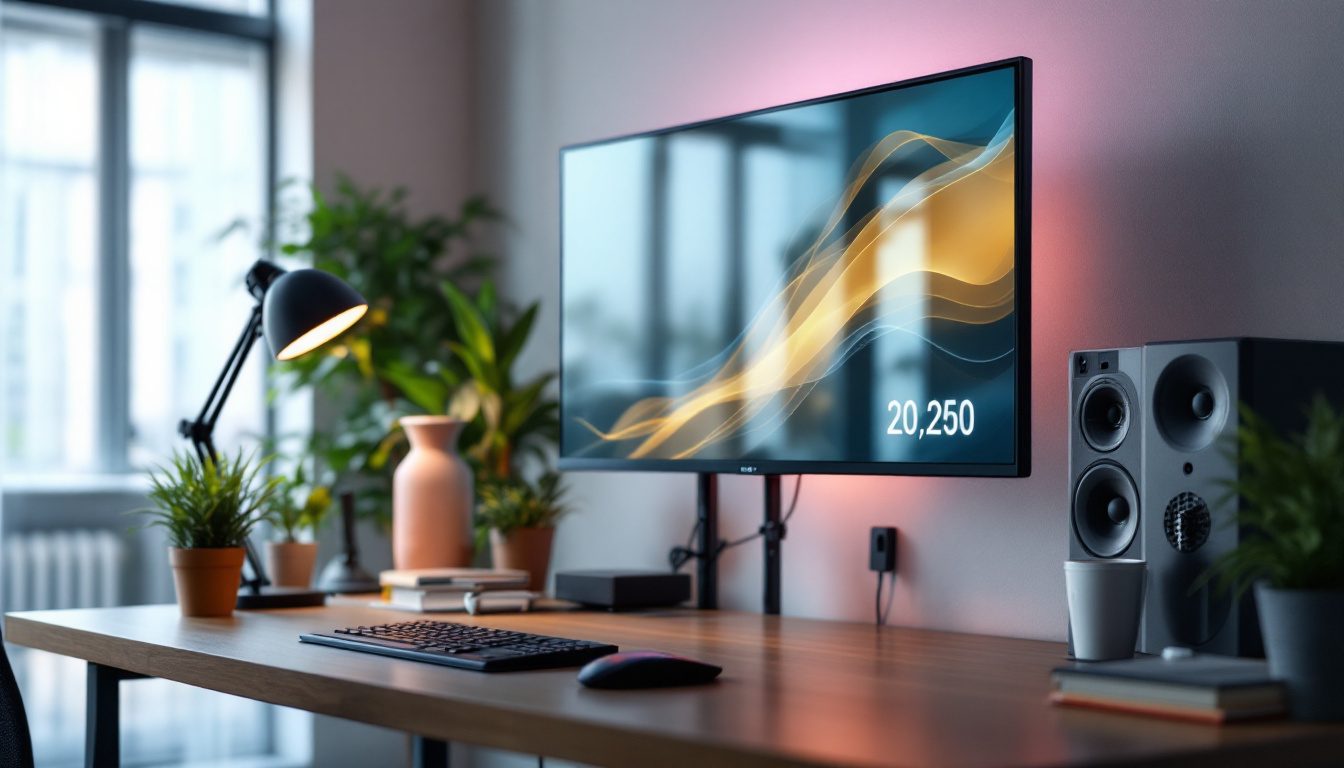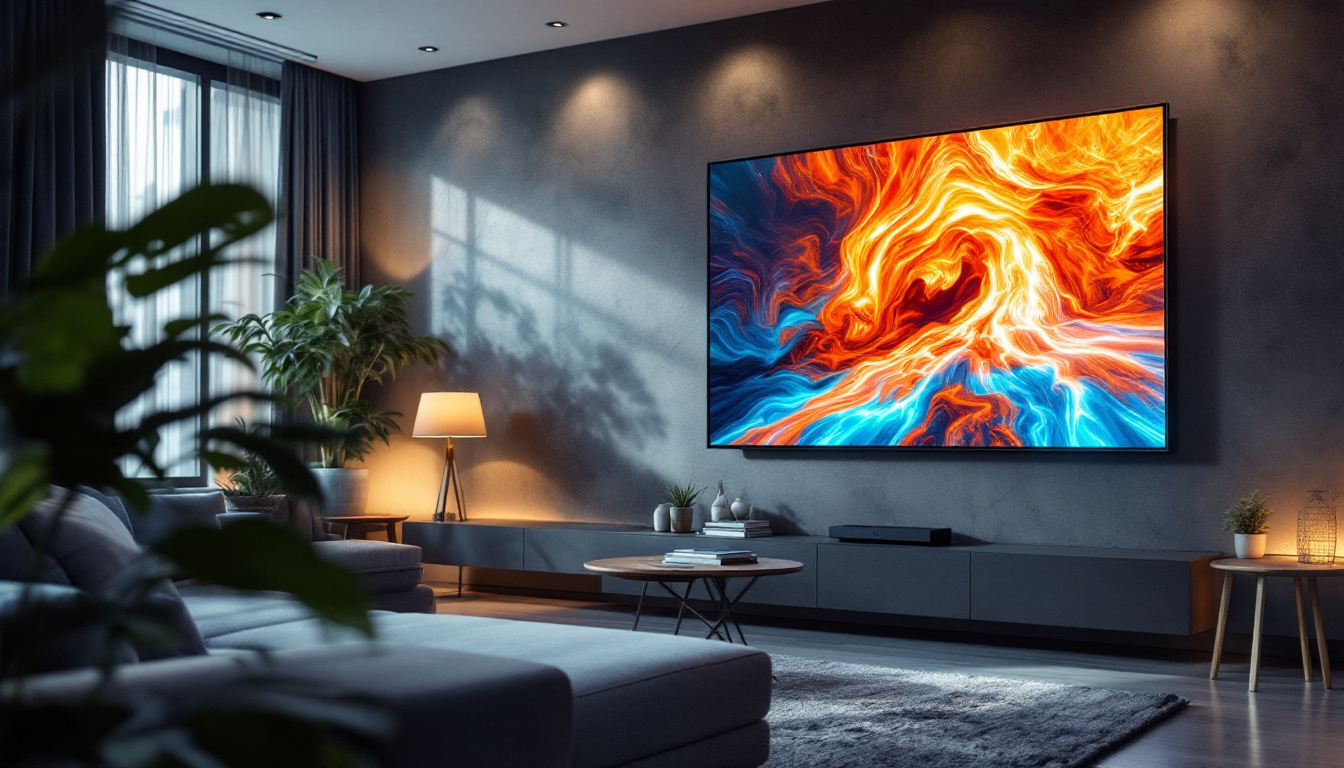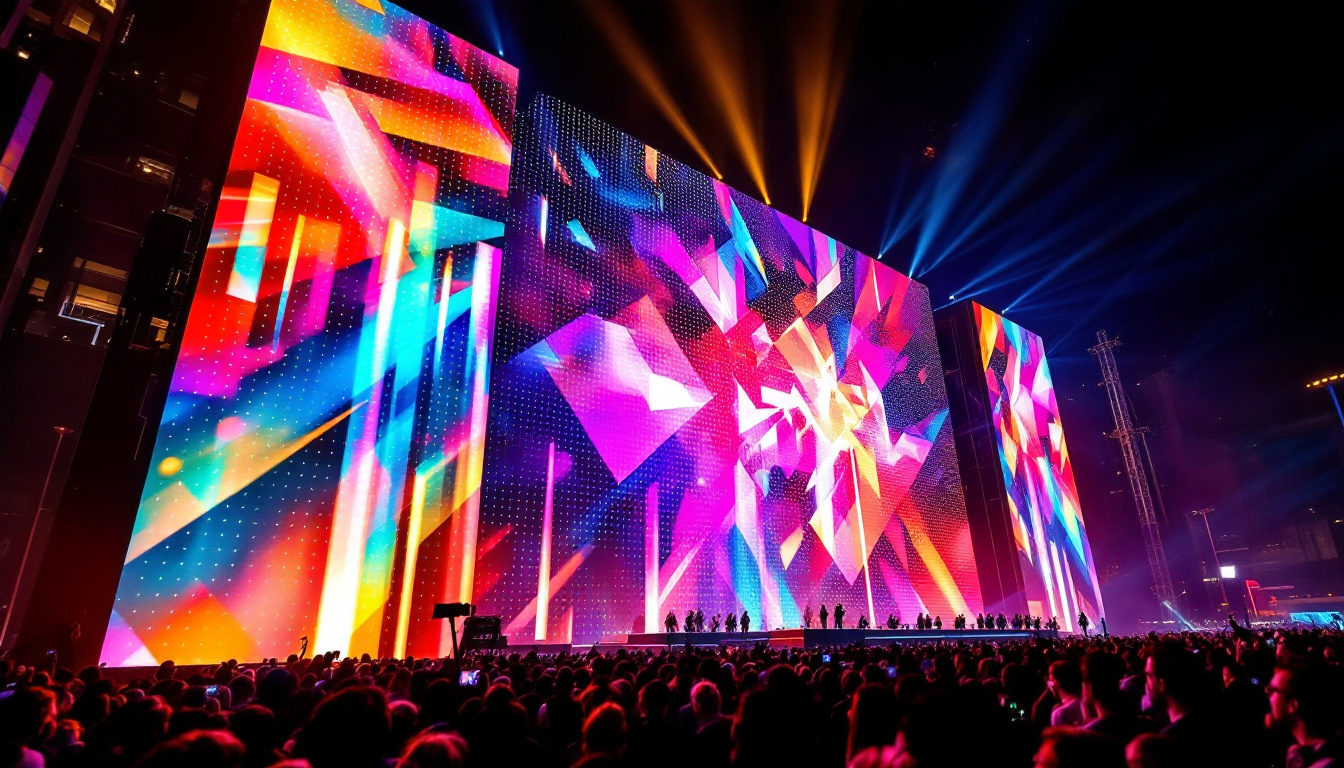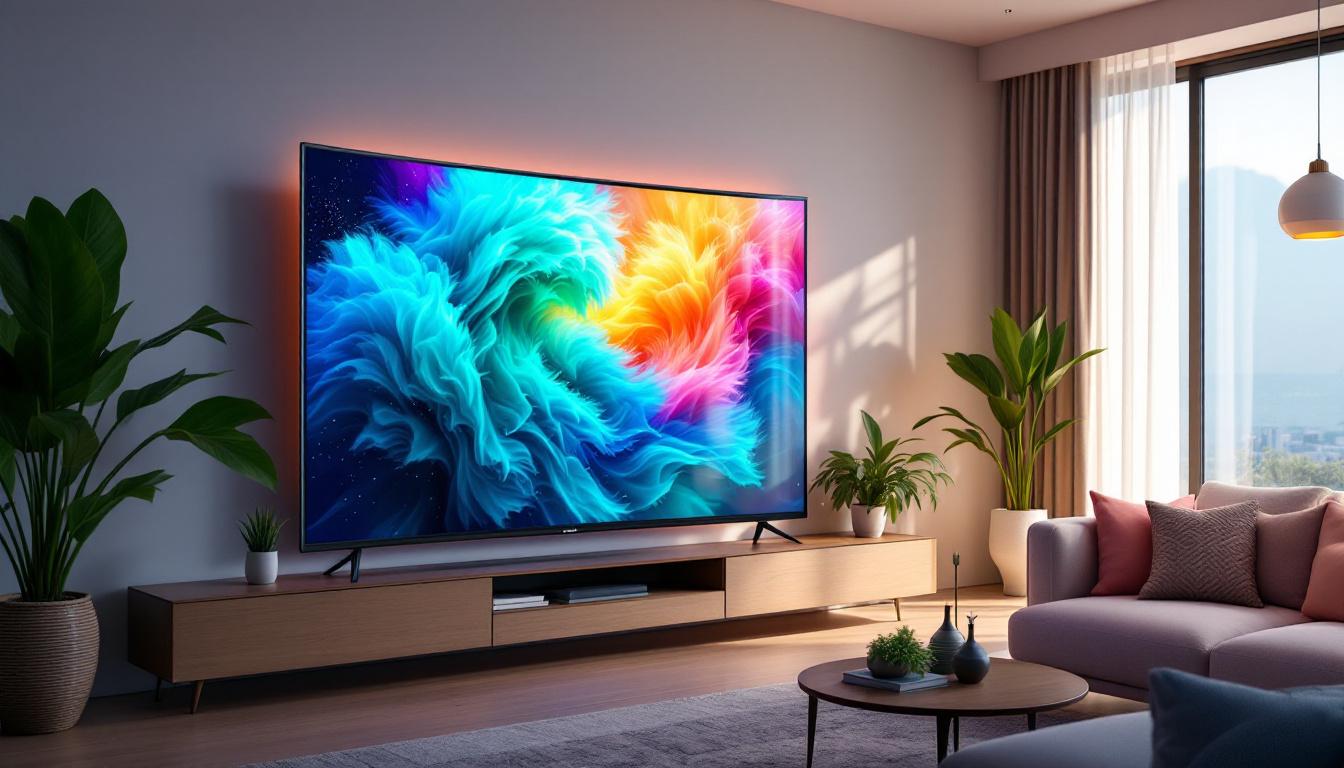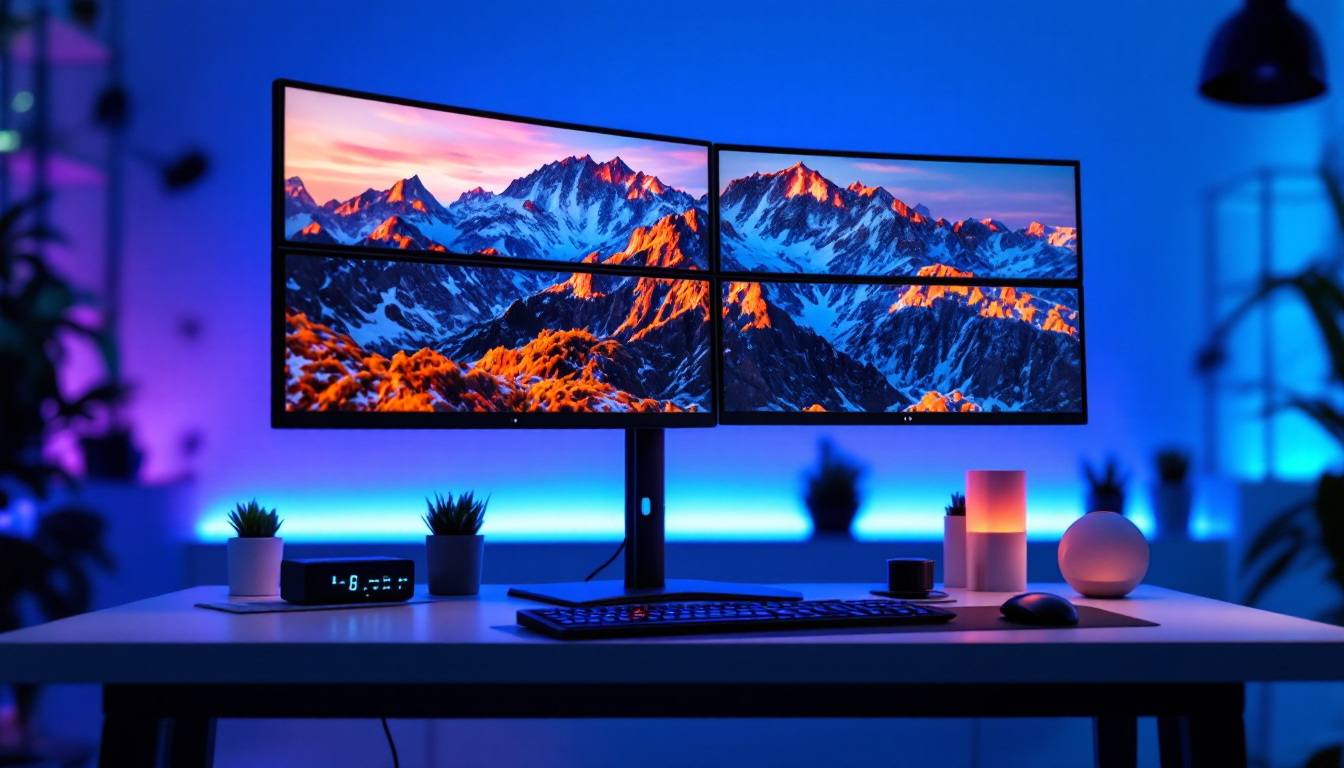100 Inch LCD Display: LED Display Explained
The evolution of display technology has significantly transformed the way we consume information and entertainment. Among these advancements, the 100-inch LCD display stands out as a remarkable option for both commercial and personal use. This article delves into the intricacies of LCD technology, the advantages of large displays, and the implications of using LED backlighting in these massive screens.
Understanding LCD Technology
Liquid Crystal Display (LCD) technology has become a staple in the display market due to its versatility and efficiency. At its core, an LCD screen utilizes liquid crystals sandwiched between two layers of glass. These crystals manipulate light to produce images, making them a popular choice for televisions, computer monitors, and digital signage. The widespread adoption of LCD technology can be attributed to its ability to deliver high-quality visuals while maintaining a slim profile, allowing for sleek designs that fit seamlessly into modern aesthetics.
How LCD Works
The operation of an LCD involves several key components: the liquid crystal layer, polarizers, and a backlight. When an electric current passes through the liquid crystals, they align in a way that either allows or blocks light from passing through. This process occurs in conjunction with polarizers that filter the light, resulting in the creation of images on the screen. The precise arrangement of these components is crucial; even minor adjustments can significantly affect the display’s performance, including its response time and viewing angles. Manufacturers continually innovate to enhance these characteristics, leading to the development of advanced LCD technologies such as In-Plane Switching (IPS) and Twisted Nematic (TN) panels, each offering unique benefits tailored to different user needs.
One of the most significant advantages of LCD technology is its ability to produce sharp images with excellent color accuracy. This is particularly important for applications where visual fidelity is paramount, such as in graphic design or medical imaging. Additionally, LCD screens are known for their lower power consumption compared to older display technologies, making them an environmentally friendly choice. As a result, they have become the preferred option not only for consumer electronics but also for professional settings, where prolonged use is common and energy efficiency is a priority.
The Role of Backlighting
While LCD screens are adept at creating images, they require a backlight to illuminate the display. Traditional LCDs used cold cathode fluorescent lamps (CCFL) for this purpose, but modern displays predominantly utilize LED (Light Emitting Diode) backlighting. This shift has brought about several improvements in terms of energy efficiency, brightness, and color range. LED backlighting allows for thinner screens and greater flexibility in design, enabling manufacturers to create ultra-slim models that cater to consumer preferences for minimalism and portability.
Moreover, advancements in LED technology have led to the introduction of features such as local dimming and edge-lit displays, which enhance contrast ratios and improve the overall viewing experience. Local dimming allows specific areas of the screen to be dimmed or brightened independently, resulting in deeper blacks and more vibrant colors. This is particularly beneficial for watching movies or playing video games, where visual depth can significantly impact immersion. As the demand for high-definition content continues to rise, the evolution of backlighting technology remains a critical focus for manufacturers striving to meet consumer expectations for superior visual performance.
The Benefits of 100-Inch Displays
As technology progresses, the demand for larger displays has surged. A 100-inch LCD display offers a plethora of benefits that cater to both business and entertainment needs. From immersive viewing experiences to enhanced collaboration, large displays have become increasingly popular in various settings.
Enhanced Viewing Experience
One of the most compelling reasons to opt for a 100-inch display is the immersive experience it provides. Whether used for watching movies, playing video games, or presenting information, a larger screen allows for greater detail and a more engaging experience. Viewers can appreciate finer details that might be lost on smaller screens, making it an excellent choice for home theaters and conference rooms alike.
Moreover, the size of the display can significantly impact the viewer’s perception of the content. A larger screen can create a sense of presence and involvement, drawing viewers into the experience. This is particularly beneficial in settings such as museums, where large displays can captivate audiences and enhance storytelling.
Improved Collaboration and Communication
In professional environments, a 100-inch LCD display can facilitate better collaboration and communication. Large screens are ideal for meetings, allowing multiple participants to view presentations and share ideas without straining their eyes. The increased visibility ensures that everyone in the room can engage with the content, leading to more productive discussions.
Additionally, many modern displays come equipped with smart technology, enabling wireless connectivity and interactive features. This allows for seamless integration with various devices, making it easier to share information and collaborate in real-time.
LED Backlighting: A Game Changer
LED backlighting has revolutionized the way LCD displays function. By replacing traditional CCFLs with LEDs, manufacturers have been able to enhance the performance of LCD screens significantly. This section explores the benefits of LED backlighting and its impact on display quality.
Energy Efficiency
One of the most notable advantages of LED backlighting is its energy efficiency. LEDs consume significantly less power compared to CCFLs, which translates to lower energy bills and a reduced carbon footprint. This is particularly important for large displays, as the energy savings can be substantial over time.
Furthermore, LED technology allows for features such as dimming and brightness control, enabling users to adjust the display’s performance based on their needs. This flexibility not only enhances user experience but also contributes to energy conservation.
Improved Brightness and Contrast
LED backlighting provides superior brightness and contrast compared to traditional backlighting methods. This improvement is crucial for large displays, where ambient light can easily wash out images. With LED technology, users can enjoy vibrant colors and deep blacks, resulting in a more dynamic viewing experience.
Moreover, the ability to control local dimming allows for enhanced contrast ratios, making it easier to distinguish between light and dark areas in images. This is especially beneficial for content that relies on high levels of detail, such as movies and video games.
Applications of 100-Inch LCD Displays
The versatility of 100-inch LCD displays makes them suitable for a wide range of applications. From educational institutions to corporate environments, these displays are being utilized in various sectors to enhance communication and engagement.
Corporate Use
In the corporate world, large displays are increasingly being adopted for presentations, video conferencing, and digital signage. A 100-inch LCD display can serve as a focal point in a conference room, allowing teams to collaborate effectively and share information with clarity.
Moreover, businesses can use these displays for advertising and branding purposes. Digital signage can capture the attention of potential customers in retail environments, providing an engaging way to showcase products and promotions.
Education and Training
Educational institutions are also leveraging the benefits of large displays for teaching and training purposes. A 100-inch LCD display can enhance classroom experiences by providing a platform for interactive learning. Teachers can present multimedia content that captivates students and fosters engagement.
Additionally, these displays can be used for training sessions and workshops, allowing participants to view presentations and demonstrations clearly. The large screen size ensures that everyone in the room can see the content, promoting a collaborative learning environment.
Challenges and Considerations
While the advantages of 100-inch LCD displays are numerous, there are also challenges and considerations to keep in mind. Understanding these factors can help consumers make informed decisions when investing in large display technology.
Space Requirements
One of the primary challenges associated with large displays is the space they require. A 100-inch LCD display demands a significant amount of wall space and may not be suitable for smaller rooms. Before making a purchase, it is essential to assess the available space and ensure that the display can be accommodated without compromising the overall layout.
Additionally, the viewing distance must be considered. For optimal viewing experiences, the distance between the viewer and the screen should be appropriate. If the display is too large for the room, viewers may struggle to see the content clearly, negating the benefits of the large screen.
Cost Considerations
Another important factor to consider is the cost associated with purchasing and maintaining a 100-inch LCD display. While prices have decreased over the years, large displays still represent a significant investment. It is crucial to weigh the benefits against the costs and determine whether the investment aligns with the intended use.
Moreover, ongoing maintenance and potential repair costs should be factored into the budget. Ensuring that the display remains in optimal condition may require additional resources, especially in high-usage environments.
Future Trends in Display Technology
The display technology landscape is continually evolving, with new advancements on the horizon. As demand for larger and more efficient displays grows, manufacturers are exploring innovative solutions to enhance performance and user experience.
OLED and MicroLED Technologies
While LCD technology remains prevalent, alternatives such as OLED (Organic Light Emitting Diode) and MicroLED are gaining traction. These technologies offer superior color accuracy, contrast, and viewing angles compared to traditional LCDs. As production costs decrease, it is likely that larger OLED and MicroLED displays will become more accessible to consumers.
These emerging technologies promise to redefine the viewing experience, providing even more vibrant and immersive content. As manufacturers invest in research and development, the future of display technology appears bright.
Integration with Smart Technology
The integration of smart technology into large displays is another trend that is shaping the future of display solutions. Smart displays equipped with internet connectivity and interactive features allow users to access a wealth of content and applications directly from the screen.
This capability enhances the versatility of large displays, making them suitable for a wide range of applications, from entertainment to education and beyond. As smart technology continues to evolve, the potential for innovative uses of large displays will expand significantly.
Conclusion
In summary, the 100-inch LCD display represents a significant advancement in display technology, offering numerous benefits for both personal and professional use. With its ability to deliver immersive experiences, enhance collaboration, and provide vibrant visuals through LED backlighting, it stands out as an excellent choice for various applications.
While challenges such as space requirements and cost considerations exist, the advantages of large displays often outweigh these factors. As technology continues to evolve, the future of display solutions promises even more exciting developments, ensuring that large displays remain a vital part of our visual landscape.
Whether for entertainment, education, or corporate use, the 100-inch LCD display is poised to play a crucial role in how we engage with content in the years to come.
Discover LumenMatrix’s Advanced LED Display Solutions
Ready to elevate your visual experience with the latest in display technology? LumenMatrix is at the forefront of LED innovation, offering a diverse range of LED display modules designed to bring your content to life. From immersive Indoor LED Wall Displays to dynamic Outdoor LED Wall Displays, and from versatile Vehicle LED Displays to engaging LED Sports Displays, our solutions are crafted to maximize brand visibility and captivate your audience. Embrace the future of visual communication with LumenMatrix’s cutting-edge digital signage and LED display solutions. Check out LumenMatrix LED Display Solutions today and transform the way you share your message.

